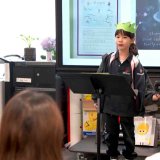Introduction
A common myth says, “Creativity is just for artists,” but that is not true. Creativity shows up when we solve problems, imagine new ideas, or design fresh solutions. That is why how to encourage creativity in kids is such an important question for both parents and teachers.
Creativity is not limited to painting or drawing. It includes creative thinking, discovering better ways to approach tasks, and generating new ideas in any subject. Teaching creative thinking skills across all learning builds adaptability, resilience, and readiness for a future where innovation matters most.
When we nurture creativity everywhere in math, reading, science, and daily life, students gain sharper analysis, deeper engagement, and fundamental tools to tackle tomorrow’s complex problems.
Why Creativity is a Universal Skill, Not Just an Artistic Talent
A. The Evolving Demands of the Future Workforce
As automation and AI advance, many careers will require what machines cannot offer: human ingenuity and innovative insight. Today’s job market values innovation and creative problem-solving more than ever, making creative thinking essential.
B. Beyond the Arts
Creativity appears in all subjects and daily life:
- In science, students design new experiments or invent eco-solutions.
- Math benefits from novel proofs or unconventional problem-solving.
- History lessons come alive with reimagined timelines and alternative outcomes.
- Every day tasks, like organizing or negotiating, benefit from fresh ideas.
C. Enhancing Critical Thinking and Problem-Solving
To be creative means questioning assumptions and imagining multiple solutions. The Achieve Centre confirms that creative thinking skills boost reasoning and problem-solving ability.
D. Fostering Adaptability and Resilience
Kids who explore new ideas learn to embrace mistakes. Creative thinking helps young learners see failure as a stepping stone and remain flexible when situations shift.
Core Components of Creative Thinking
A. Divergent Thinking
This is the skill of brainstorming many ideas with an open mind and is a core part of creative thinking, encouraging quantity before judgment.
B. Convergent Thinking
Once ideas are gathered, students learn to evaluate and select the best options. This stage completes the cycle of creative thinking skills.
C. Curiosity and Open-Mindedness
Ask questions like “What if…?” and be open to new ideas. This openness fuels creative thinking and lifelong learning.
D. Imagination and Originality
Here, students visualize novel concepts and produce original ideas that surprise and delight.
E. Risk-Taking and Experimentation
Creativity asks us to try and sometimes fail. Risk-taking fosters resilience and deeper learning through experimentation.
Strategies for Cultivating Creativity Across All Subjects (and at Home)
A. Encourage Inquiry-Based Learning
Start lessons with questions that invite exploration, not just facts. This nurtures creative thinking skills by sparking student curiosity.
B. Promote Open-Ended Tasks and Projects
Let students solve problems in unique ways. Choose projects that welcome multiple answers and encourage and show the kids how to embrace creativity through choice.
C. Foster a “Safe to Fail” Environment
Celebrate effort and curiosity. Teach students that mistakes guide growth, a core concept in creative thinking skills.
D. Use Brainstorming and Idea Generation Techniques
Tools like think-pair-share, SCAMPER, or mind maps invite broad creative thinking before refinement.
E. Integrate Interdisciplinary Connections
Show real links between subjects like math in art or science in poetry to reinforce creative thinking skills.
F. Encourage Collaboration and Diverse Perspectives
Group work brings together different ideas and builds stronger solutions. Students learn to combine variance for better creative outcomes.
G. Provide Tools and Resources for Creation
Offer materials such as paper, LEGO, coding tools, or digital apps to spark invention and creative thinking.
H. Ask Provocative Questions
“What else could you try?” “Why does this work?” This prompts reflection and deeper creative thinking.
I. Model Creative Thinking
Share your messy creative process by showing sketches, false starts, trials and errors. Demonstrate how adults use creative thinking skills, too.
Specific Examples of Creativity in Non-Art Subjects
A. Science
Students design eco-friendly devices, test new models, or build prototypes, bringing to real-life creative thinking by design.
B. Mathematics
They find multiple ways to solve a single problem, develop patterns, and apply math to practical issues, a true application of creative thinking skills.
C. History/Social Studies
Students interpret events from new viewpoints or reimagine historical outcomes by embracing storytelling and perspective.
D. Language Arts
Creative writing, poetry, or storytelling lets students use their imagination. They craft unique narratives and deeper symbolic meanings with creative thinking skills.
E. Technology/Coding
Students design games or apps, troubleshoot creatively, and process new features, combining logic and creative thinking as a daily skill.
What’s Next: Supporting Creative Growth
Creativity is not reserved for artists; it is a skill we build in every classroom and home. Learning how to encourage creativity in kids equips them with adaptable, problem-solving minds. When children develop creative thinking skills, they are better prepared for life’s challenges, future careers, and personal growth.
A creative child is more resilient, more curious, and more ready to innovate. They do not fear failure, they use it to fuel new ideas. They ask, explore, and always seek solutions.
Want to see how this can look in action? Explore Stamford American School Hong Kong to learn how we weave creative thinking into every subject, helping every student become a bold and creative learner.





